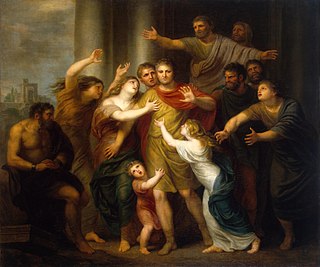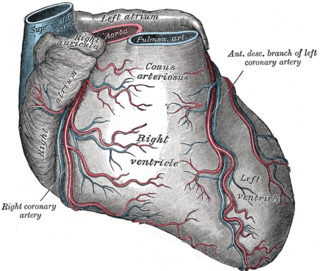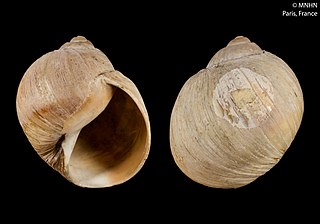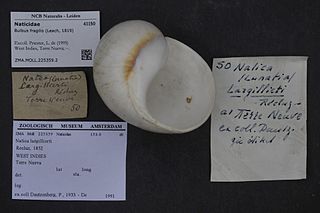Related Research Articles
Year 235 BC was a year of the pre-Julian Roman calendar. At the time it was known as the Year of the Consulship of Torquatus and Bulbus. The denomination 235 BC for this year has been used since the early medieval period, when the Anno Domini calendar era became the prevalent method in Europe for naming years.
Year 245 BC was a year of the pre-Julian Roman calendar. At the time it was known as the Year of the Consulship of Buteo and Bulbus. The denomination 245 BC for this year has been used since the early medieval period, when the Anno Domini calendar era became the prevalent method in Europe for naming years.

The gens Atilia, sometimes written Atillia, was a plebeian family at ancient Rome, which rose to prominence at the beginning of the fourth century BC. The first member of this gens to attain the consulship was Marcus Atilius Regulus, in 335 BC. The Atilii continued to hold the highest offices of the state throughout the history of the Republic, and well into imperial times.
Gaius Norbanus was a Roman politician who was elected consul in 83 BC alongside Lucius Cornelius Scipio Asiaticus. He committed suicide in exile at Rhodes after being proscribed by Lucius Cornelius Sulla shortly after the latter's victory in the civil war.

The bulbus glandis is an erectile tissue structure on the penis of canid mammals. During mating, immediately before ejaculation the tissues swell up to lock (tie) the male's penis inside the female. The locking is completed by circular muscles just inside the female's vagina; this is called "the knot" tightening thus preventing the male from withdrawing. The circular muscles also contract intermittently, which has the effect of stimulating ejaculation of sperm, followed by prostatic fluid, as well as maintaining the swelling of the penis and therefore the tie, for some time. For domestic dogs the tie may last up to half an hour or more, though usually less. When male canines are excited, the bulbus glandis may swell up inside the penile sheath, even if the dog has been neutered.

The bulbus cordis is a part of the developing heart that lies ventral to the primitive ventricle after the heart assumes its S-shaped form. The superior end of the bulbus cordis is also called the conotruncus.

The infundibulum is a conical pouch formed from the upper and left angle of the right ventricle in the chordate heart, from which the pulmonary trunk arises. It develops from the bulbus cordis. Typically, the infundibulum refers to the corresponding internal structure, whereas the conus arteriosus refers to the external structure. Defects in infundibulum development can result in a heart condition known as tetralogy of Fallot.

The primitive ventricle or embryonic ventricle of the developing heart, together with the bulbus cordis that lies in front of it, gives rise to the left and right ventricles. The primitive ventricle provides the trabeculated parts of the walls, and the bulbus cordis the smooth parts.

The primitive atrium is a stage in the embryonic development of the human heart. It grows rapidly and partially encircles the bulbus cordis; the groove against which the bulbus cordis lies is the first indication of a division into right and left atria.

The aorticopulmonary septum is developmentally formed from neural crest, specifically the cardiac neural crest, and actively separates the aorta and pulmonary arteries and fuses with the interventricular septum within the heart during heart development.

The truncus arteriosus is a structure that is present during embryonic development. It is an arterial trunk that originates from both ventricles of the heart that later divides into the aorta and the pulmonary trunk.
Balbus is Latin for "stammerer", and may refer to:

The globe of the eye, or bulbus oculi, is the eyeball apart from its appendages. A hollow structure, the bulbus oculi is composed of a wall enclosing a cavity filled with fluid with three coats: the sclera, choroid, and the retina. Normally, the bulbus oculi is bulb-like structure. However, the bulbus oculi is not completely spherical. Its anterior surface, transparent and more curved, is known as the cornea of the bulbus oculi.
Attidius, possibly to be identified with Marcus Atilius Bulbus, was a senator of the Roman Republic. Sometime in the early 70s BC, he was convicted of a crime, probably maiestas, and exiled. Attidius found refuge in the court of Mithridates VI of Pontus, and the two men were friends for many years. The sole evidence for Attidius's life and career is a passage by the Greek historian Appian in his Mithridatic Wars.

Conus bulbus, common name the onion cone, is a species of sea snail, a marine gastropod mollusk in the family Conidae, the cone snails and their allies.

Bulbus fragilis is a species of predatory sea snail, a marine gastropod mollusk in the family Naticidae, the moon snails.
Bulbus smithii is a species of predatory sea snail, a marine gastropod mollusk in the family Naticidae, the moon snails.

Bulbus is a genus of predatory sea snails, marine gastropod mollusks in the family Naticidae, the moon snails.
Bulbus may refer to:

The gens Norbana was a plebeian family at ancient Rome. Members of this gens are first mentioned toward the beginning of the first century BC, and from then to the end of the second century AD they filled a number of magistracies and other important posts, first in the late Republic, and subsequently under the emperors.
References
- ↑ Smith, William (1870). Dictionary of Greek and Roman biography and mythology. 1. Boston, Little. p. 517.